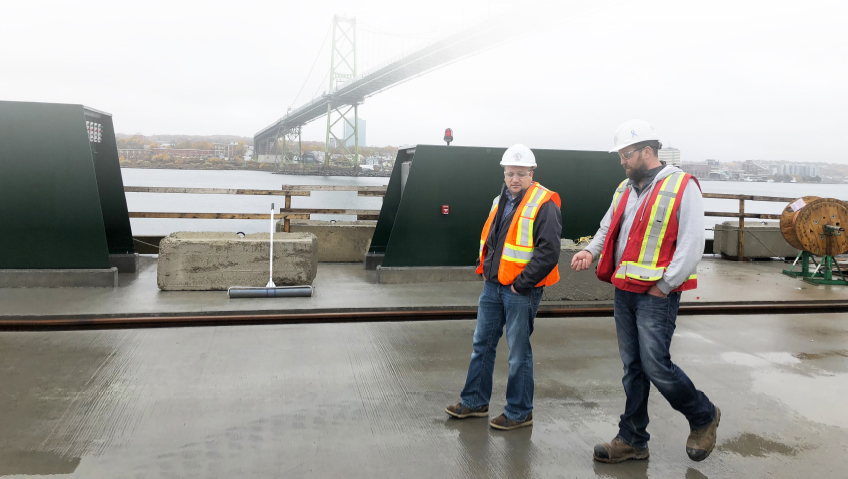Those engaged in construction and other trades can affirm that the sector is a challenging one. The challenges are presented in numerous ways. Factors such as the physical demands of the work, jobsite safety, long or irregular hours, separation from family thanks to the industry’s scattered construction sites, and financial insecurity in downturns are just a few of the common stressors.
All these can take a toll on any employee, presenting in the form of impaired mental health and overall well-being. Mental health issues are often overlooked in the construction industry. But they shouldn’t be – concerns about job safety and mental health are closely intertwined and will affect an employee’s overall state of well-being.
Signs of escalating stress can show up physically, psychologically, and behaviorally. Such stress can lead to depression and anxiety, and to drug or alcohol abuse as a coping mechanism. These in turn, can lead to accidents on the job site, illness, absenteeism, and presenteeism – being physically present but distracted and unfocused. A worker in this condition is an unsafe worker, who can cause injury not only to her- or himself, but to co-workers.
Proof of the seriousness of this concern comes from the U.S. Department of Labor in its statistics on the suicide rate among construction workers. A 2020 report by the Centers for Disease Control and Prevention (CDC) found that “Men working in construction have one of the highest suicide rates compared to other industries. Their rate of suicide is about four times higher than the general population.”
Unfortunately, few construction companies’ health and wellness programs tackle the issues of preventing suicide, controlling alcohol and substance abuse, and promoting mental health.
Fortunately, however, more companies are becoming aware that programs to foster mental well-being are a crucial component of their operations and their relationship with their workforce.
There is too often a stigma attached to mental health problems. Many skilled trades workers, especially males, tend to be stoic and perfectionist, not readily admitting to their ‘vulnerabilities.’ And males are less likely than females to seek help for mental health concerns.
This needs to change. Employers need to let their employees, at all levels, know that they’re in a work environment which promotes respect and that they’re encouraged to speak freely about any issues they may be experiencing.
Some construction companies offer mental health awareness programs and counseling, but it needs to go beyond that. Both companies and employees need a better understanding of how intricately mental health is bound up with worker performance and observation of safety protocols on job sites, indeed with the health of any construction company.
It’s important for supervisors and those in upper management to become familiar with and recognize signs of serious anxiety, depression, and suicidal thoughts in jobsite employees. Many such stressors go unreported.
According to the Construction Industry Alliance for Suicide Prevention (CIASP), the signs that are reliable indicators include decreased productivity, conflict among co-workers, injuries and near hits, decreased problem-solving ability and an increase in tardiness and absenteeism, for example.
The CIASP also has suggestions for companies wishing to support the mental health of their employees. These include taking inventory of what actions the company currently engages in, making a commitment to focus on the mental health of employees, and creating a plan of action that extends forward from this starting point.
Construction companies can build on existing practices and processes to include mental health awareness as part of their culture through such things as toolbox talks, staff meetings, and safety orientations.
Education and training can also come in the form of corporate and safety leadership, guest speakers from the industry, and seminars and webinars. It’s essential that discussion and education move out of the realm of shadows and become ever-present components of a company’s agenda, focus, and communications.
Sean Strickland, Executive Director of Canada’s Building Trades Union (CBTU) notes that “Canada’s Building Trades Unions have been leaders in apprenticeship, health, and safety training for over 100 years. Through our 195 training centres, we work closely with our contractor-partners to privately fund ongoing training opportunities for our members.”
He says that the construction industry is changing rapidly and that “ongoing, integrated training is key to having the best-trained and skilled workforce anywhere in the world. Health and safety is a cornerstone of the building trades. We have advocated, and will always advocate, proper health and safety training – including mental-health training and support – to ensure every worker returns safely home at the end of the day.”
According to Construction Magazine, “There is no doubt the construction industry cares for its people. However, we are at a critical point in identifying solutions to help workers resolve their mental health issues. More must happen.
“Increasing awareness and treatment of mental health are essential for workers who require sound minds and bodies to be productive at work and available for their families and friends at home.”
Mental health information needs to be incorporated into safety orientation for all employees to ensure those working onsite are equipped by this knowledge to work more efficiently and safely. Companies may also provide counseling through employee assistance programs.
Employees need to know what their specific roles involve and who they should be taking directives from while on site. Employees should “take regular breaks, which are good for both their mental health and physical health. But for preventative measures to gain traction, you need supervisors and managers to model self-care and take breaks themselves.”
Regular mental health check-ins also prove beneficial. Health Shield research indicates that “57 percent of workers would feel more loyal to their jobs, be more productive and take less time off work if their employer supported their mental health.”
For those employers concerned about their employees’ mental health, there are options available to address the issues, according to the Centers for Disease Control and Prevention (CDC).
These options include free or subsidized clinical screenings from a qualified mental-health professional and a clinical referral when required, offering health insurance with little or no out-of-pocket costs for medications or counseling in mental health. Lifestyle coaching and self-management programs can also prove effective.
Other options can include the distribution of such materials as brochures, fliers, and videos to employees indicating the signs and symptoms of diminished mental health. Employers can make employees aware of self-management techniques such as breathing exercises, proper diet with discounts for healthy foods and supplements, and meditation (mindfulness) which can aid in improving focus and motivation.
Additionally, companies should provide quiet spaces for relaxation, offering flexible hours when possible, access to exercise classes, and allowing employees’ the opportunity to freely participate in decisions about those issues that precipitate and affect job stress.
It’s important to note that The World Health Organization estimates that “depression, anxiety disorders, and other conditions cost the global economy $1 trillion per year in lost productivity.”
Also, mental health challenges “can lead to higher health care costs for employers. Some employers may not be aware, though, of exactly how much mental health care drives up insurance costs,” according to a team from Tufts Medical Center Program on Health, Work and Productivity. “One estimate showed that an employed person with depression has an annual average healthcare cost of over $10,000, which is more than twice that of an employee without depression ($4,584).”
Many employers now have health offerings that include personal digital or virtual technology solutions such as smartphones, tablets, fitness trackers, chatboxes, and gamified exercises, for example.
Such digital solutions are available at any time, are anonymous and offer therapeutic solutions which enable help on demand ruling out the wait for in-person therapy.
“Many of our affiliate training centers utilize new technologies like virtual reality training to build the necessary skillset for apprentices to go on jobsites and work more safely. Virtual training, videos, online learning modules – they all make training more accessible, creating the right environment to have a safer workforce.”
The CBTU’s Virtual Recruitment and Assessment Portal (constructiontradeshub.com) “Provides a virtual learning portal for anyone going through their apprenticeship or interested in entering the trades to start their training today,” says Sean.
He notes that the CBTU has created free health and safety and online courses “as a direct result of training directors from across the country who have identified areas in need of improvement that we can address virtually, making the trades more accessible to all.”
Wearables and digital biomarker apps collect physiological data. An employee can use their smartphone to report on their mood at any given time or record their voice to determine their emotional state. Smart watches can monitor heart rate, body temperature and electrodermal activity to determine their current state of well-being.
The employment of drones to identify dangerous terrain can improve jobsite management and safety by eliminating an employee’s risk of exposure to dangerous environments before projects begin. Drones ensure that construction companies engaged in a high-hazard industry are implementing high safety standards.
Drones also enable a company to get an idea of how projects are progressing and make sound tactical decisions based firmly on data. Drones equipped with laser sensing and ultrasonic radar can detect site irregularities, providing contractors real-time information and reducing the risk to employees’ safety.
In large scale construction such as skyscrapers, for example, drones can regularly inspect for maintenance requirements and identify emergencies if they should arise. Sending employees to do this task can put them at risk, something every contractor wants to avoid.
In conclusion, a culture of caring for employees’ mental health and well-being, through various initiatives, is a business imperative for any industry, especially that of construction and its trades.
These initiatives need to come from sound leadership enabling employees to feel psychologically and physically safe at all times of the workday. Everyone wants to arrive home safely. They have every right to expect that.






